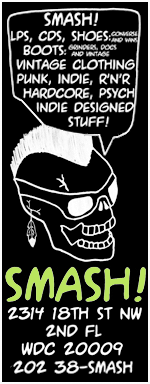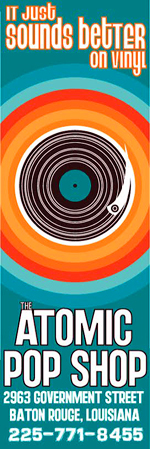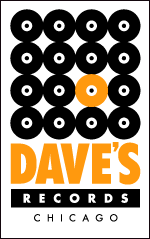
Scott Fagan’s tale holds a circuitous course of impressive connections, valiant attempts, and unfortunate misses, but it’d be anticlimactic without a worthwhile record in the equation; the fresh reissue of South Atlantic Blues helps provide enduring relevance to the narrative. Originally released by Atco in 1968 to utter consumer neglect, it’s a rediscovery requiring neither qualifications nor special pleading, for nobody else cooked up a progressive stew of folk, pop, and soul quite like this one. It’s out now through Saint Cecilia Knows, the first 1,000 hand numbered copies of the LP featuring 180gm vinyl and a heavy-duty tip-on jacket exclusively reproducing Jasper Johns’ lithograph “Scott Fagan Record.”
Scott Fagan’s father was a musician (reportedly a saxophonist and singer) who kept company with such heavyweights as Dizzy Gillespie and Lester Young, while his dancer mother raised him in an art colony on the Caribbean island of St. Thomas. As a teen Fagan played rock ‘n’ roll in an act christened The Urchins and in the mid-‘60s stowed away for Florida, eventually making his way to New York where he immediately scored an in-person audition with Brill Building songwriters Doc Pomus and Mort Shuman.
Consequently, Fagan was signed to Pomshu Productions, receiving two years of mentoring from the duo as he and Pomus wrote “I’m Gonna Cry Till My Tears Run Dry,” a hit for Irma Thomas later waxed by Linda Ronstadt. Pomshu additionally secured deals for Fagan, first with Columbia, where he cut an unreleased single, and then via Bert Berns’ Bang Records, the association producing ‘66’s “Give Love a Chance” b/w “Tutsie.”
The story takes a wild turn as Fagan almost became an Apple signing, South Atlantic Blues amongst the candidates to be the first non-Beatles-related album issued by the label (a distinction belonging to the self-titled debut of James Taylor, though the Modern Jazz Quartet’s Under the Jasmine Tree is documented as sharing the same release date in the UK and US.)
Instead, Fagan landed at Atco, and by ’69 his LP was in the cutout bins; the copy plucked by Jasper Johns inspired three lithographs by the Modern Art cornerstone all titled “Scott Fagan Record,” one currently housed in the Metropolitan Museum of Art, another in the Museum of Modern Art, and the third at the Walker Art Center. And all this colorful background is capped off by Fagan being the biological father of Stephin Merritt, the esteemed songwriter behind The Magnetic Fields and numerous related projects.
Fagan knew nothing of his paternity until 2000 after Merritt mentioned it on NPR, and they didn’t meet in person until 2013. This distance is reflected in the stylistic diversity between father and son, with any similarities generally implicit though it is worth noting both Fagan and Merritt specialize in non-Rock sensibilities. Of the two, Fagan was more adjusted to his times, as Merritt has essentially thrived as a non-calculated anachronism supplying Broadway/show tune pop classicism to the indie crowd.
South Atlantic Blues was produced by Elmer Jared Gordon (who’d worked with Pearls Before Swine) and arranged by Horace Ott (noted as the writer of “Don’t Let Me Be Misunderstood”) with the personnel rumored to include drummers Bernard Purdie and Jimmy Johnson of the Sun Ra Arkestra. The results have procured a distinguished list of comparisons: Scott Walker, the Tims Hardin and Buckley, Donovan, Lou Reed, young David Bowie, and the Van Morrison of Astral Weeks, it and South Atlantic Blues’ emergence in the same month underscoring that Fagan wasn’t beholden to anybody else’s style.
Described on more than one occasion as a song cycle, the LP does embody the era’s ambitiousness without ever falling victim to it. “In My Head” opens the record strongly, matching touches of the baroque to horn section boldness as Fagan’s testifying bears more than a slight resemblance to Donovan in a soulful frame of mind.
But perhaps the most striking element is Fagan’s voice, the unforced nature of his delivery, frequently emitting an idiosyncratic quaver, substantially reinforcing the comparisons above. “Nickels and Dimes” is also a more identifiable ‘60s folk-pop merger as the vocals exude emotionalism and avoid the effete or the fragile across each side. However, the strings in “Crying” do reinforce an air of sophistication nicely offset by the subtle weight of the horns.
Borrowed soul/R&B trappings were often overzealously applied during the period of South Atlantic Blues’ making but are tasteful in this instance and extend to the upbeat “The Carnival Has Ended,” the aura mingling with Victor Brady’s non-trite steel pans as the unique qualities of Fagan’s voice acquire warmth and ride up front in the mix. “South Atlantic Blues” contrasts; one of the record’s more folk-inclined numbers, it offers an appealing blend of acoustic and electric guitars and percussion as Fagan’s powerful singing maintains a sense of control throughout.
From there, “Nothing but Love” is punchy folk-soul with charts leaning to the pop side of the Stax spectrum, and “Tenement Hall” is a slower, earthier groove, initially restrained and building toward bursts of expression abetted by the surges of horn. Effectively halving the tune is an out of left-field flight of abstraction followed by a moment of silence that’s just as unexpected; composure restored, the song course is reset, and culminates in an abruptly wild ending.
Alternately reminiscent of Van and Buckley, the direct folky air of “In Your Hands” pairs well with title track, while “Crystal Ball” is a surprising bit of late-‘60s neo-Tin Pan Alley augmented with hints of ‘50s pop, especially in Fagan’s brief spoken section; strings add a psychedelic touch near the end. Closing selection “Madame-Moiselle” mildly recalls Scott Walker’s early solo albums if they were as influenced by later-‘60s Motown as Jacques Brel; ultimately it’s not that distant from the mood, if not necessarily the overall sound, of Love’s Forever Changes.
Fagan’s debut doesn’t reach the heights of that masterpiece (nor Astral Weeks) but it is a remarkably assured statement and far less a curio than yet another legit addition to the ‘60’s hefty shelf. After a promising start Fagan was beset by a series of commercial obstacles, subsequently cutting a 45 in ’69 for Epic, co-writing the ’71 rock musical Soon (with a pre-fame Richard Gere in the cast, it managed three performances), and seeing Many Sunny Places issued in ’75 by RCA.
It seems Fagan reacted to it all in a manner befitting his bohemian upbringing, an outlook exquisitely detailed on South Atlantic Blues.
GRADED ON A CURVE:
A-












































